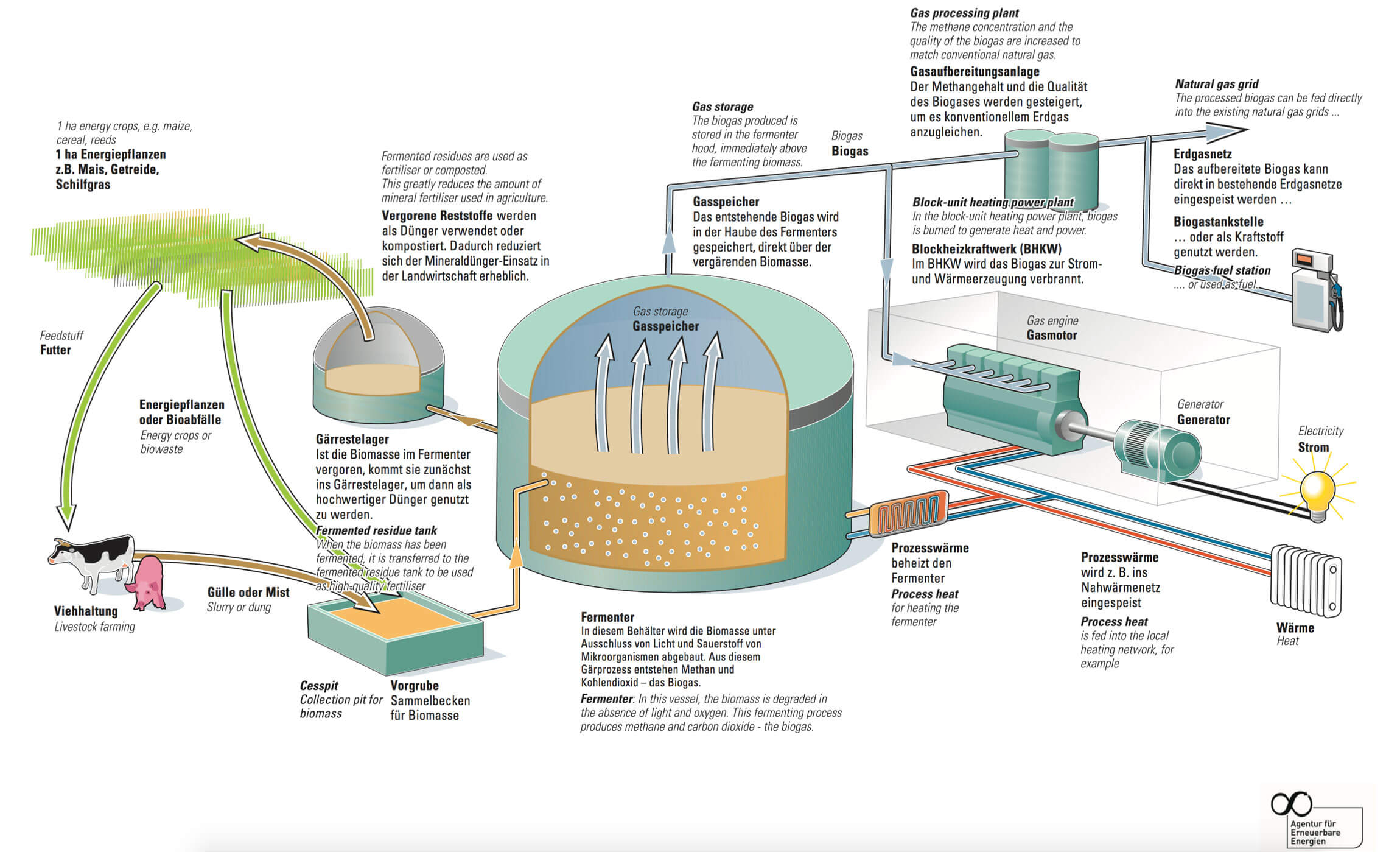The biogas plant in Feldheim
Since 2008, the village of Feldheim has had its own biogas plant with an installed electric power capacity of 526 kW. The plant is operated by the local agricultural cooperative. The annual biomass input is 8,600m³ of manure, 8,700 tonnes of maize and 190 tonnes of wholegrain cereal. These raw materials are produced and supplied by the agricultural cooperative. The plant generates 4 million kWh of electricity a year, which is fed into the public grid. The heat produced during power generation is fed into a separately installed district heating grid that supplies the local inhabitants, the livestock farms and commercial enterprises with heating. Each year, around 15,500 m³ of livestock manure are produced as a by-product of power generation and supplied back to the agricultural cooperative. Due to their village being self-sufficient in respect of heating energy, the inhabitants of Feldheim save 259,000 litres of heating oil every year. This means they are not only helping to create a cleaner environment, but are also saving money.

What is bioenergy?
Infinite energy from biomass
Biogas from slurry and renewable raw materials

